
The Precision People
800-770-7320
954-748-1715
Simple Lens Approximations
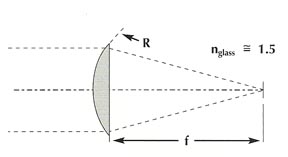 For the plano-convex lens, the focal length equals twice the radius of the convex surface. This is also true for the plano-concave; howerver, since the radius is negative, this results in a negative focal length: f = 2R |
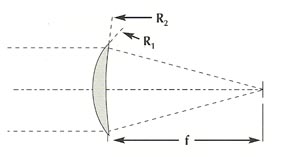 For other forms of simple lenses, the following applies
|
|||||||||
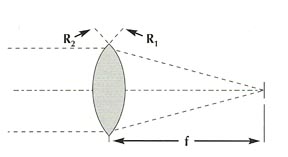 For the double-convex or double-concave lens having equal radii, the focal length will equal the radius: R1 = R2 = f
For the double-convex or double-concave lens having equal radii, the focal length will equal the radius: R1 = R2 = f |
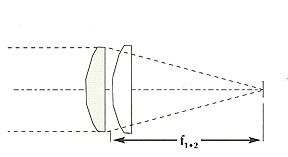 If two or more thin lenses are stacked close together, their powers (1/EFL) may be added:
If two or more thin lenses are stacked close together, their powers (1/EFL) may be added:
| |||||||||
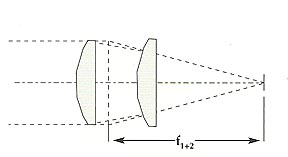 If a substantial separation "d" exists between lenses, then:
If a substantial separation "d" exists between lenses, then:
|
||||||||||